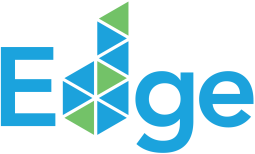Join GBCI in Pune, India, on October 26 to learn how green building can transform India’s housing market and pave the way for the development of affordable and resource-efficient homes.
Hear real-world experiences from leading building industry experts using EDGE and LEED in their professional practice, and join a dynamic discussion about the unique opportunity green building programs present for India’s housing market.
Green Homes for Everyone Within this Generation
When: October 26, 14:30–17:30
Where: Vivanta Blue Diamond, 11, Koregaon Park Road, Vasani Nagar, Koregaon Park, Pune, Maharashtra 411001
The challenge of the moment
The growth of India’s cities is indicative of economic growth, rising incomes, a growing population and urbanization. By 2030, India is expected to double its building stock, and 70 percent of those buildings have yet to be built. This exponential and rapid growth holds the power to either pave the way for the sustainable development of India’s future buildings or to lead to detrimental environmental impacts at a global scale.
As the economy in India shifts upward, more Indians are looking to cities as places to live and work. This transition is heightening the demand for high-rise residential, communities and mixed-use development projects, along with the construction and materials needed to build them.
Building and construction accounts for one-third of global carbon emissions, and the pollution in India is life-threatening. More than 95 percent of the world’s population is breathing polluted air, and the problem is most acute in Asia, with India and China accounting for over half of global deaths from ambient air pollution. India now rivals China, with as many as 1.1 million Indians losing their lives each year due to the negative effects of poor air quality.
To alleviate the impacts of development and climate change and to keep pace with market trends, it’s vital that India move toward affordable, resource-efficient green housing projects in its urban centers. Without this shift, environmental challenges like energy shortages, water scarcity, waste accumulation, air quality crises and chronic disease will continue to intensify.
Paving the way for the sustainable development of India
Green building certifications like EDGE and LEED are significant drivers of market transformation worldwide, and present cost-effective ways to mitigate negative environmental impacts, helping to reduce water consumption, resource consumption and greenhouse gas emissions while driving economic, societal and environmental performance outcomes.
An innovation of IFC, a member of the World Bank Group, EDGE is a green building certification program focused on making buildings more resource-efficient. EDGE is a fast, simple and affordable way to scale up buildings in emerging markets. The EDGE software empowers residential and commercial developers and builders to quickly identify the most cost-effective ways to reduce energy use, water use and embodied energy in materials. Also, the rating system provides a quantifiable business case that resonates with sectors of the market that have been slow to change, encouraging more affordable housing in high-growth urban areas and making green building and design accessible for middle- and low-income housing.
LEED, or Leadership in Energy and Environmental Design, is the most widely used green building rating system in the world. It is available to virtually any building and home project types, and provides the framework to create healthy, highly efficient and cost-saving green buildings.
LEED homes are built to be healthy, providing clean indoor air, reducing toxins and incorporating safe building materials to ensure a comfortable home. They are also designed to save critical resources—energy and water—and can lower utility bills each month. And in many markets, certified green homes are now selling quicker and for more money than comparable non-green homes.


